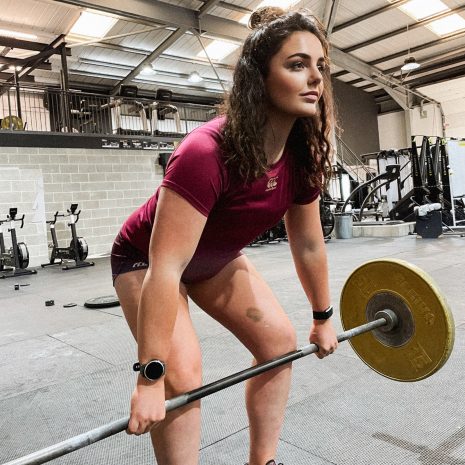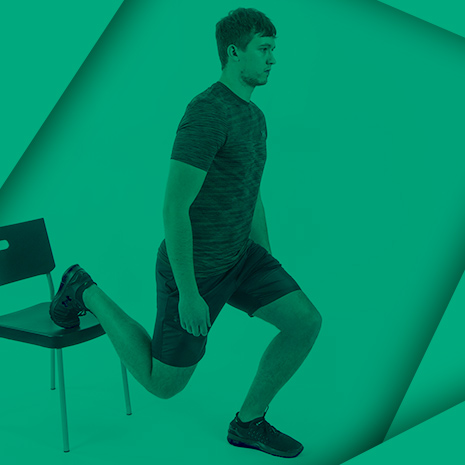The most important training principles for centres and wingers
The last article in our training series delved into the optimal rugby training strategies for props. In this article, we’re shifting focus to strength and conditioning principles for the outside backs.
Let us begin by first breaking down the physical demands of rugby centres and wingers. As with most positions, it is fair to say that they require a broad range of skills including ball carrying through contact, kicking, passing, tackling, and evading defenders. Centres are even occasionally involved in rucking and mauling.
When you analyse the world’s best teams, their ability to dominate the set piece and breakdown is paramount to success. Centres that are capable of quickly taking advantage of their team winning the breakdown are often capable of converting the opportunities into points, making them an invaluable asset.
Quick links
Strength, power & speed
Stepping / evading defenders
Ball carrying through contact
Tackling
Training program
It goes without saying that rugby is very much a team sport, however, stand out wingers and centres tend to be extremely influential. An example of a tremendously skilled outside back is Israel Folau (Australia). You don’t need to watch Folau for long before realising his incredible talent and ability to read the game.

But what does he possess that other backs don’t? Well, apart from experience and technical skill he has tremendous natural athleticism, speed and power. These are all key attributes of the elite outside backs. Now we know what to work on, how do we go about systematically improving these skills through training variables?
Strength, power, speed and speed endurance
To begin the process of breaking skills down, we must first look at where it all comes from. I truly believe that in rugby (and a lot of other sports for that matter) that STRENGTH is one of the fundamental components for optimal performance. By building a strength base, we allow the body to create more force in any circumstance, which, when practised in certain skills will assist performance in said skill – i.e. jumping, stepping, throwing, sprinting.

Strength must be established from training over a significant period of time, and once established, a good strength level can be transferred between individual skill components. This must be completed by periodising your training appropriately in “phases” that focus directly on power and speed work.
Whilst rugby is one of the more difficult sports to periodise (due to the frequency of games, training and possible injury) it is generally accepted that your strength base will be established in the off-season. It’s then possible to specify your training a little more during the playing season (with a little crossover of course).
Whilst most players in the team will focus on strength as a unit, there will be subtle differences in training techniques among players’ training programs subject to their position. Centres, due to their positional needs, can and should be exposed to a higher level of speed and power work. Speed and power are developed by performing higher velocity movements in training. Below is a table to highlight what techniques a player may use to improve power and speed.

Let’s now analyse a few skills specific to outside backs that can be worked on to enhance performance on the rugby field.
1. Stepping / evading defenders
First and foremost, the ability to change direction whilst running (and FAST) is attributed to AGILITY.
Agility can be enhanced through numerous methods however a huge component of agility is POWER and we know to be powerful you must be STRONG. I can’t stress enough how most of the skills attributed to enhanced performance come from being STRONGER.
Of course, we want to ensure that we can TRANSFER the strength into specific skills such as stepping, tackling, jumping, sprinting. The most notable thing about these skills is that they are all performed at a rapid pace. You can’t jump high slowly….. Try it. Happy? Now let’s move on.

Getting stronger from your big compound lifts in the gym like your squats, deadlifts, presses and pulls is pretty effective. But once we’ve built that strength base, we then need to transfer these into skills by practising the skill itself.
My point here is that although strength plays a huge role in performance, it is not the ONLY component that you should work on as an outside back. If it was all just about strength, then powerlifters would be the best rugby players in the world, and they’re not. Especially as an outside back, we want to incorporate strength work as a base, but practice speed and power drills regularly that will transfer to game situations.
Exercises to improve stepping:
Bounding – leap with as much force as possible in a zigzag pattern for around 10-12 steps. You need to ensure you keep ground contact time as short as possible to enhance the power. If your ground contact time is too long (flat footed) try taking shorter and sharper leaps.
Plyometrics – These can be as simple as stepping off a small box and powering into the air (depth jump) or as advanced as jumping repetitively over hurdles for 8-12 reps. Again, focus on ground contact time being as short as possible.
Slalom runs – Set up slalom poles (cones work too) for approximately 10-30 metres at tight angles and run the course whilst being timed. Pair this activity/test with training to analyse improvements.
2. Ball carrying through contact
We discussed earlier how it is crucial for centres and wingers to be able to carry the ball through contact to penetrate the defensive line. Paired with stepping, this should most definitely be a priority for outsides backs.
Exercises to improve ball carrying through contact:
Resisted sprints – Keep these simple, making sure you can maintain the mechanics of a sprint. Attach a speed parachute and sprint as hard as you can for around 6-10 seconds with short sharp breaks to simulate gameplay.
Partner-resisted sprints – If you don’t have a sledge, get a training partner/teammate to put a power resistance band around their waist and hold you back as you sprint with the ball.
3. Tackling
Although tackling is important for all rugby players, centres need to be able to tackle at speed and then get up quickly in an attempt to gain possession. Whilst actual game play and training situations on the pitch are best, there are certain things you can do to improve your tackling power.

Horizontal medicine ball throw – Take a medicine ball (5-10kg) in a squat position and power forward throwing the ball as hard into a wall as you can. Follow this by regaining the start position as quickly as possible ready for the next tackle (or rep with the med ball). The key is to push from the hips and drive the arms out like you are wrapping them around a player to grab on and take them down hard.
Grip strength – If your grip strength is bad, even if you do manage to tackle a player, you won’t be able to hold on to them – so work on your grip strength! Exercises you can do for this include anything where you are required to hold on to something heavy for a set period. Think farmers walks and deadlifts.
Training
Our previous article (rugby training for props) detailed specific guidelines for structuring a training plan including how to periodise your training.
Below are a few steps to incorporate more power and speed-based activity in your training if you are an outside back.
Compound lifts – For power focused movements, you should aim to work on exercises that utilise high speeds such as; cleans, power cleans, snatches, high pulls, jerks, split jerks, push presses, and pendlay rows.
Rep range – For power based resistance training, most of your sets should stay within the 3-5 rep range 65-75% of your 1RM.
Speed and skill work – You would be best to structure training sessions that allow for the bigger, heavier work to be completed at the start to ensure that you have the energy and technical efficiency to complete the lifts safely. Then you can work on the speed/skill exercises mentioned earlier in the article, as they are less demanding than the heavy compound work.
Recovery – You can train as hard as you like, but if you don’t focus on your recovery, your performance and results will suffer. The main areas to work on to improve recovery are sleep, nutrition and stress.
Detailed below is a 3-day program with the above information in mind.
Training Program for Outside Backs
(Power and speed focus) – This is an example of a program that could be worked in as part of the following schedule: Training Tuesday and Thursday, game on Sunday.



Article Summary
- Focus on strength first
- Outside backs need to focus more on power and speed work to enhance their performance
- Progressive overload should be achieved over time
- Ensure resistance training does not hinder your technical skill training
About the Author: Dean Robertson MSc, BSc (Hons) is the founder of Elysium Training Systems Ltd. An Edinburgh based company focussing on working with a range of different populations including, team sports, powerlifters, physique athletes and general health and well-being clients looking to change their performance, lives and mind-sets. You can contact him through the Elysium Training Systems Facebook page or at elysiumpt@outlook.com






Comments